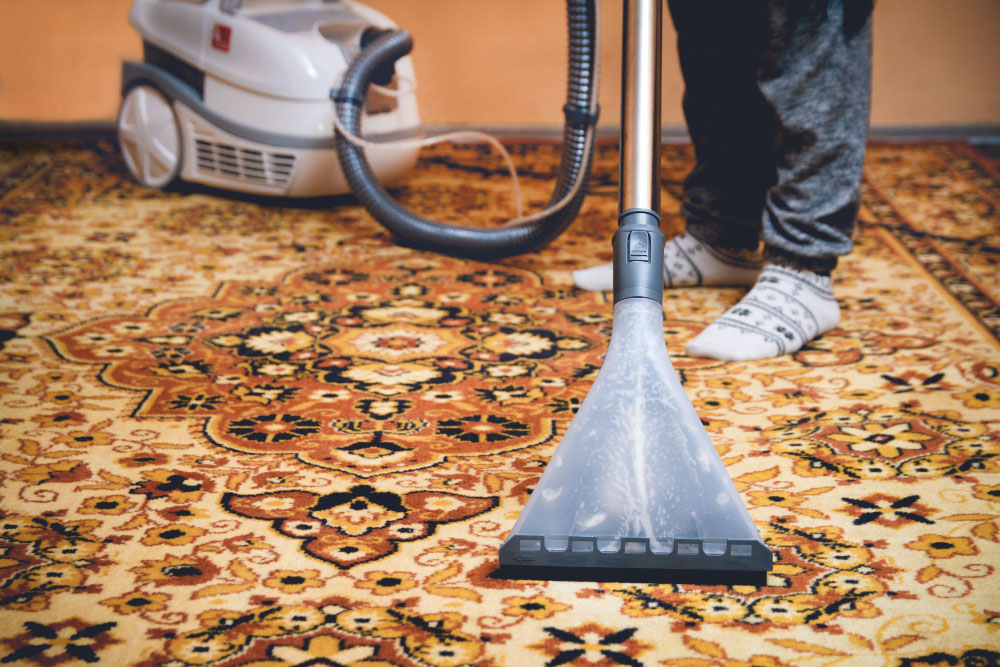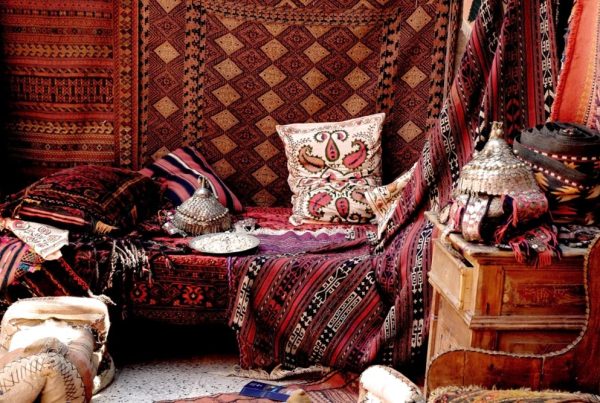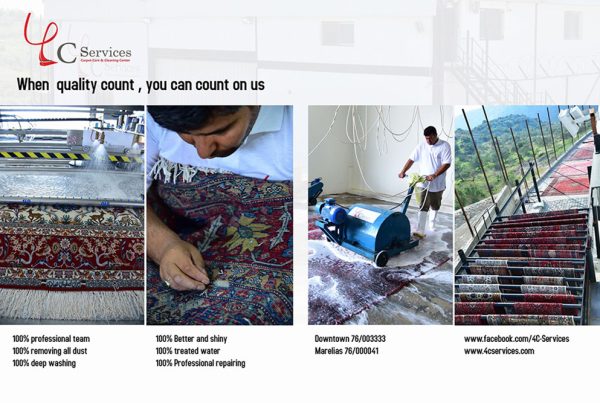Few textiles command the same quiet authority as an Isfahan carpet. Renowned for refined knot density, luminous silk highlights, and balanced medallion compositions, these Persian masterpieces embody precision. When an Isfahan enters the workshop carrying decades of embedded dust, dulled pile, and faint dye migration, a routine surface clean will not do. It needs a deep, conservation-minded wash—carefully staged to honor its structure, stabilize its dyes, and reveal its original radiance. This before-and-after case story illustrates how expert processes bring a fatigued treasure back to life while safeguarding longevity for families in Lebanon and design studios in Beirut.
Before: A Rug with Hidden Potential
The incoming Isfahan presented typical symptoms of age and use: muted reds and blues, a flattened central field where foot traffic concentrated, light soil halo around the medallion, and fringes showing fiber weakness near the knots. Under angled light, the pile bloomed unevenly—classic evidence of both impacted dry soil and historical spot cleaning that left residues. Closer inspection revealed isolated dye movement along a border scroll, likely triggered by previous contact with over-wet cleaning or a spill. The rug’s foundation remained fundamentally sound, but the outer guard border showed abrasion and incipient fray at two corners.
Assessment: Science Before Soap
An expert deep wash begins with testing, not water. The team mapped fiber types (fine wool pile with silk accents), confirmed knot type and count, and performed colorfast checks on reds, blues, and ivory details. Because some Isfahan reds can be fugitive, we established a low-pH, cool-water plan with strict dwell control. The rug’s geometry was measured against squared reference lines to document any latent distortion that might appear once the pile relaxed. These pre-wash notes would guide both cleaning and the finishing block, ensuring the after photo showed not merely brighter color, but truer shape.
Dust Extraction: The Hidden Half of Cleaning
Deep washing succeeds or fails on the strength of dry soil removal. We used directional air dusting and controlled vibration to pull granular contaminants out of the foundation without hammering the pile. This stage often releases astonishing volumes of micro-sand and compacted grit. Removing them first reduces abrasion during the wet phase, protects delicate silk highlights, and allows chemistry to work on actual soils rather than mud made from leftover dust.
Pre-Conditioning and Color Stabilization
With the field relaxed and respirable dust lifted, we spot-preconditioned traffic zones using a wool-safe solution engineered for natural dyes. Suspected fugitive areas were stabilized with dye barriers tested during assessment. Silk highlights received a separate plan: ultra-low agitation, cool water, and short, carefully timed passes. The goal was not to “scrub the rug clean,” but to loosen bonds between fiber and soil while preserving sheen and hand.
Immersion, Agitation Control, and Rinsing
For this sturdy yet dye-sensitive Isfahan, we used a controlled immersion wash. The bath was prepared with treated water and pH carefully monitored throughout. Agitation was minimal and directional—tools ran with the nap to respect pile lay and knot orientation. Each chemistry phase was followed by multiple rinse cycles until extraction water ran clear. This thorough rinse-out is a defining difference between professional deep washing and superficial cleans; it removes residues that otherwise attract new soil and mute color.
Moisture Extraction and Controlled Drying
Balanced extraction protects the foundation from distortion. After removing bulk moisture uniformly, the rug went to a controlled drying room with calibrated airflow and temperature. Corners and borders were supported to avoid scalloping, and the piece rested on a breathable platform to prevent back-side condensation. For coastal environments like Beirut, this disciplined drying is essential to prevent post-wash dye migration and to preserve crisp outlines at the guard borders.
Fringe and Edge Stabilization
While not a full restoration, the service included targeted edge care. We secured weak fringe bundles with discreet stitching at the root and tidied ends to a uniform presentation. On the two vulnerable corners, a short length of overcasting stabilized the outer warp/ weft interface to prevent early fray. These small measures extend the life of a deep wash by closing the pathways through which unraveling often begins.
Grooming, Bloom, and Pile Alignment
Final grooming returned clarity to motifs and revived the characteristic Isfahan bloom. Using soft grooming tools with the nap, the team aligned pile direction to even the reflection across the field. This is where art meets optics: properly oriented fibers reflect light consistently, amplifying contrast between motifs and ground and giving the impression of richer color without adding any coating or brightener.
After: Color, Pattern, and Structure in Harmony
The after result showed the textbook hallmarks of a successful deep wash: ivory areas regained crispness, navy grounds read cooler and deeper, and reds presented with saturated glow rather than glare. The medallion’s fine curvilinear tracery stood out cleanly, supported by restored micro-contrast in silk accents. Most importantly, the rug felt right—supple hand, no stiff residues, and an honest sheen true to the fibers. For households across Lebanon, this balance of cleanliness, safety, and authenticity defines professional care.
Care Tips to Maintain the “After”
- Use a breathable pad: It reduces shear stress on edges and keeps the rug stable on stone or wood floors.
- Vacuum with care: Suction-only on delicate sections; avoid aggressive beater bars over fringes and borders.
- Rotate seasonally: Quarter-turn every few months to balance sun exposure and traffic patterns.
- Address spills quickly: Blot with a white cloth—never scrub; then consult a professional if staining lingers.
- Plan a maintenance cadence: Schedule periodic professional cleaning to remove fine grit before it compacts.
Key Takeaways
- Testing first: Colorfast checks and structural mapping inform safe chemistry and handling.
- Dust before wet: Thorough dry soil removal is the single biggest performance boost for deep washing.
- Control, not force: Low agitation, pH stewardship, and exhaustive rinsing protect dyes and hand.
- Drying discipline: Controlled airflow and temperature prevent distortion and dye movement.
- Finish matters: Edge stabilization and proper grooming turn cleanliness into lasting beauty.
Disclaimer
This case-style article provides general education about deep washing fine rugs. Every Isfahan is unique in fiber, dyes, and condition. Always perform colorfast testing in an inconspicuous area and avoid harsh chemicals or aggressive agitation. For valuable or fragile pieces—especially those with silk or known fugitive dyes—seek evaluation and treatment from qualified professionals.



